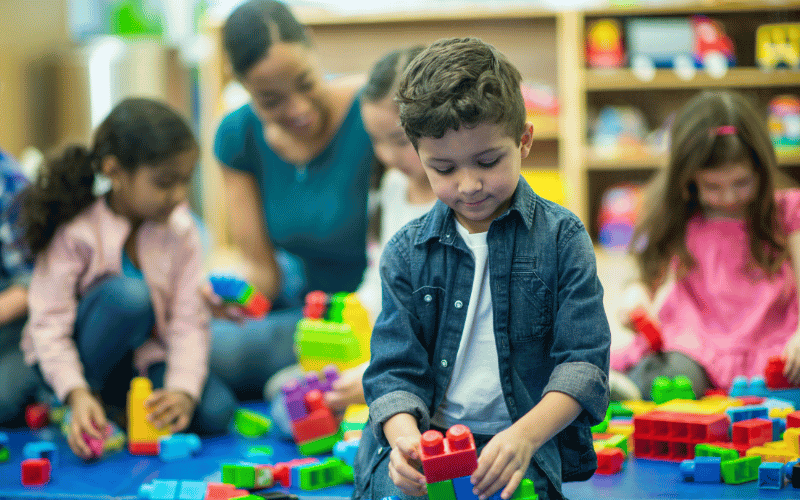Free play is the kind of activity that lets children take the reins. It’s child-led, unstructured, and free from specific goals or outcomes. Think of it as the moments when kids build forts out of couch cushions, turn sticks into magic wands, or invent games with rules only they understand. Unlike structured activities, free play doesn’t come with instructions or adult oversight—it’s all about creativity, exploration, and self-expression.
But free play has become a rare sight in many children’s lives. Parents often prioritize structured activities like sports, music lessons, or tutoring, believing these will give their kids a competitive edge. Safety concerns also play a role, with fewer children allowed to roam freely outdoors. Add academic pressures to the mix, and free play gets pushed to the sidelines. Many families don’t realize that this unstructured time is just as critical to a child’s development as any scheduled activity.
In this article, I’ll show you why free play deserves a comeback. You’ll learn how it fuels cognitive growth by encouraging problem-solving and decision-making. I’ll explain how it nurtures emotional resilience, giving kids the space to process feelings and build confidence. You’ll also see how free play strengthens social skills, as children navigate cooperation, negotiation, and conflict resolution. And let’s not forget the physical benefits—running, climbing, and exploring during free play keeps kids active and healthy.
By the end, you’ll understand why free play isn’t just a luxury; it’s a necessity for raising well-rounded, capable children. Let’s dive into the world of free play and rediscover its incredible value.
Table of Contents
ToggleThe Foundation: What Free Play Really Means
Free play is the cornerstone of childhood, offering kids the freedom to explore, imagine, and create on their own terms. To truly understand its value, we need to break down what makes free play unique and how it differs from the structured activities that often dominate children’s schedules.
Defining Free Play
At its core, free play is child-led, voluntary, and fueled by imagination. It’s the kind of play where kids call the shots, deciding what to do, how to do it, and when to stop. There are no rules imposed by adults, no specific goals to achieve, and no pressure to perform. Free play thrives on spontaneity and creativity, allowing children to follow their instincts and explore their interests without interference.
Picture a child turning a cardboard box into a spaceship or a group of kids inventing a game with nothing but a ball and their imaginations. That’s free play in action—unstructured, self-directed, and brimming with possibilities.
Free Play vs. Structured Activities
Unlike free play, structured activities come with a set of rules, objectives, and adult supervision. Sports practices, music lessons, and academic tutoring all fall into this category. While these activities have their own benefits, they often leave little room for children to take the lead or think outside the box.
Free play, on the other hand, hands the reins to the child. It encourages them to make decisions, solve problems, and navigate social dynamics on their own. Where structured activities teach discipline and specific skills, free play fosters independence, creativity, and resilience. Both have their place, but free play offers something uniquely valuable that structured activities simply can’t replicate.
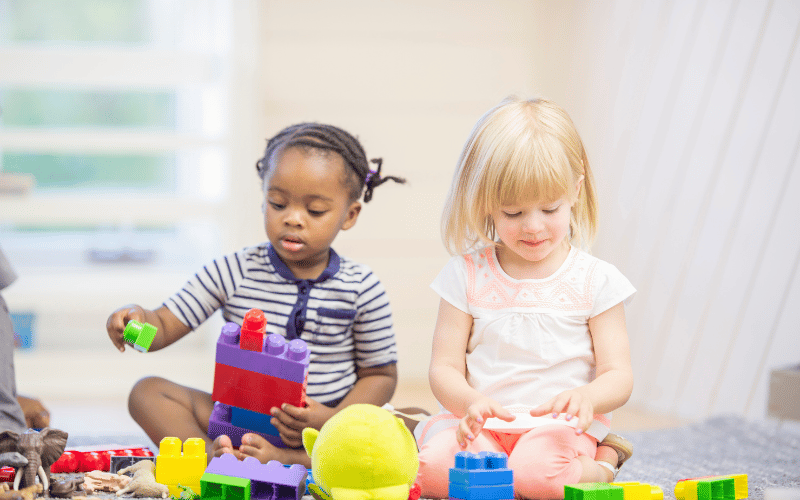
Examples of Free Play
Free play can take countless forms, limited only by a child’s imagination. Building forts out of blankets and furniture transforms a living room into a castle or a secret hideout. Pretend play lets kids step into different roles, from superheroes to shopkeepers, as they create entire worlds in their minds.
Exploring nature is another classic example—climbing trees, collecting rocks, or simply running through a field sparks curiosity and a sense of adventure. Open-ended materials like blocks, art supplies, or even sticks and leaves invite children to create without boundaries, letting their ideas take shape in unexpected ways.
By understanding what free play truly means and recognizing its unique role in a child’s development, we can better appreciate why it’s so essential. It’s not just play—it’s the foundation for growth, learning, and discovery.
How Free Play Builds Brains and Minds
Free play isn’t just about having fun—it’s a powerful tool for developing a child’s cognitive abilities. When kids engage in unstructured, self-directed activities, they’re not just playing; they’re building the mental muscles that will serve them for a lifetime.
Boosting Creativity and Imagination
Free play is where creativity takes center stage. When children make up stories, turn a stick into a sword, or transform a pile of cushions into a pirate ship, they’re flexing their imaginative muscles. This kind of play encourages them to think without limits, exploring ideas and possibilities that structured activities rarely allow.
For example, a child might use a cardboard box as a rocket one day and a treasure chest the next. This ability to see objects in new ways fosters innovative thinking, a skill that will benefit them in everything from problem-solving to artistic expression. Free play gives their imagination the freedom to roam, creating a foundation for original thought and creativity.
Sharpening Problem-Solving Skills
Every time a child encounters a challenge during free play, they’re presented with an opportunity to develop problem-solving skills. Whether it’s figuring out how to build a taller block tower or navigating a disagreement with a playmate, free play teaches kids to test ideas, adapt plans, and learn from their mistakes.
Imagine a group of children trying to build a fort out of sticks and leaves. They’ll experiment with different ways to balance the sticks, adjust their approach when something doesn’t work, and eventually find a solution. These moments of trial and error are invaluable, teaching resilience and critical thinking in a way that no worksheet or lesson plan can replicate.
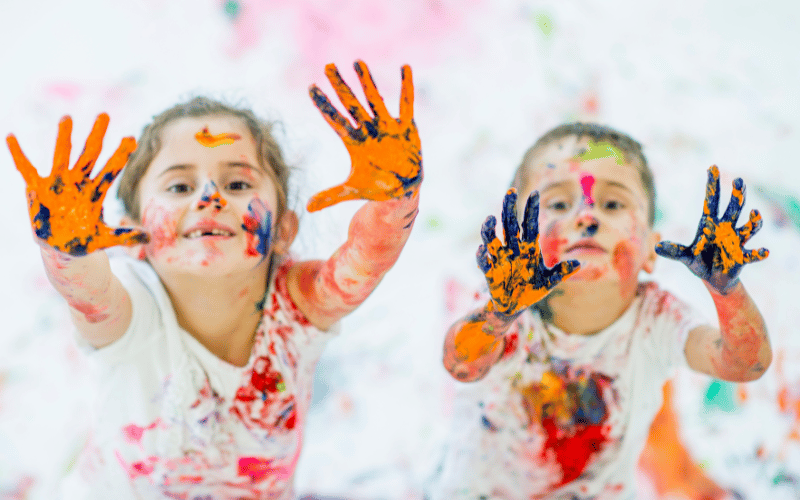
Improving Language and Communication
Free play is also a natural classroom for language development. As children talk through scenarios, negotiate roles, and explain their ideas, they’re expanding their vocabulary and honing their communication skills.
For instance, during a game of pretend grocery store, kids might discuss who will be the cashier, what items are for sale, and how much things cost. These conversations not only build social skills but also introduce new words and concepts in a meaningful context. Free play encourages kids to express themselves clearly, listen to others, and collaborate effectively—all essential skills for future success.
By fostering creativity, problem-solving, and communication, free play does more than entertain—it builds brains and minds in ways that structured activities simply can’t. It’s a reminder that sometimes, the most valuable learning happens when kids are left to play on their own terms.
Emotional and Social Benefits of Free Play
Free play doesn’t just shape young minds—it nurtures their hearts and relationships too. By giving children the freedom to explore their emotions and interact with others on their own terms, free play becomes a powerful tool for emotional growth and social development.
Building Emotional Resilience
Free play creates a safe space for children to experience and manage a range of emotions. When a child’s block tower collapses or their pretend bakery runs out of “ingredients,” they face frustration and disappointment. But in these moments, they also learn how to cope, adapt, and try again.
This process builds emotional resilience. Each small victory—whether it’s successfully rebuilding the tower or coming up with a creative solution—boosts their confidence. Free play allows kids to explore their emotions in a low-stakes environment, helping them develop the self-regulation skills they’ll need to handle life’s bigger challenges.
Developing Social Skills
When children engage in free play with others, they’re not just having fun—they’re learning how to navigate the complexities of social interaction. Sharing toys, taking turns, and deciding who gets to be the “captain” in a game of pretend are all opportunities to practice cooperation and empathy.
For example, imagine a group of kids building a fort together. They’ll need to communicate their ideas, divide tasks, and resolve disagreements about whose design to follow. These interactions teach them how to listen, compromise, and assert themselves respectfully. Free play is a natural classroom for social skills, giving children the tools to build strong, healthy relationships.
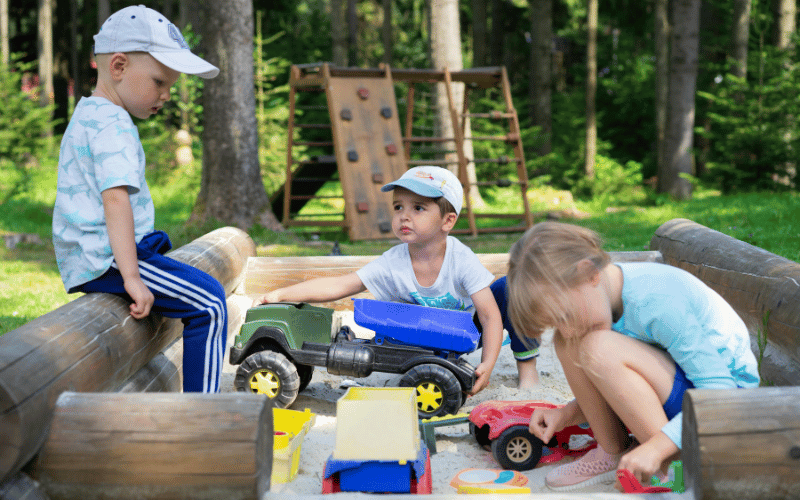
Reducing Stress and Anxiety
In a world filled with schedules, expectations, and screens, free play offers children a much-needed outlet for their energy and emotions. Running, climbing, pretending, and creating allow kids to release pent-up stress in a way that feels natural and enjoyable.
Free play also gives children a sense of control. Unlike structured activities, where adults set the rules, free play lets kids decide what to do and how to do it. This autonomy can be incredibly empowering, helping to reduce feelings of anxiety and overwhelm.
By fostering emotional resilience, social skills, and stress relief, free play does more than entertain—it equips children with the tools they need to thrive emotionally and socially. It’s a reminder that sometimes, the best lessons come from simply letting kids be kids.
Why Free Play Is Disappearing
Free play, once a staple of childhood, is becoming increasingly rare. A combination of societal shifts and modern pressures has edged it out, leaving children with less time to explore, imagine, and play on their own terms. Understanding why free play is disappearing helps us address the barriers and bring it back into children’s lives.
The Rise of Structured Activities
Parents today often feel the pressure to fill their children’s schedules with structured activities, believing that more lessons, practices, and clubs will lead to better development and future success. Sports teams, music lessons, and academic enrichment programs dominate after-school hours, leaving little room for unstructured play.
While these activities have their benefits, they often come at the expense of free play. For example, a child who spends every evening at soccer practice or piano lessons misses out on the chance to invent their own games or explore their backyard. The focus on achievement and measurable progress has unintentionally crowded out the unstructured time that fosters creativity and independence.
Safety Concerns and Less Outdoor Time
Safety concerns have also played a significant role in the decline of free play. Many parents worry about letting their children play unsupervised, whether it’s due to traffic, stranger danger, or the lack of safe outdoor spaces. As a result, children spend more time indoors, often turning to screens as a substitute for outdoor exploration.
Neighborhoods that once echoed with the sounds of kids playing tag or riding bikes now sit quiet, as children are kept inside or shuttled to organized activities. Even playgrounds, designed to encourage free play, often go underutilized because parents feel uneasy about letting their kids roam freely.
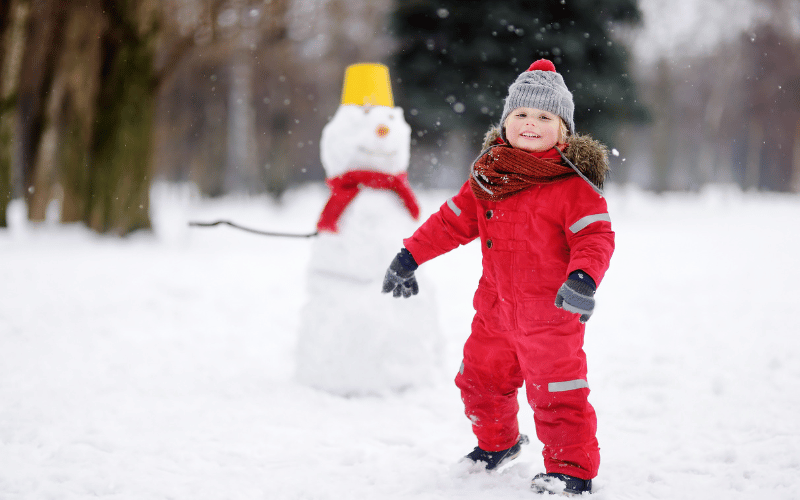
Academic Pressures
The push for academic achievement has crept into early childhood, reducing the time available for free play both at home and in schools. Many schools have shortened or eliminated recess to make room for more instructional time, leaving children with fewer opportunities to engage in unstructured, self-directed activities.
Even at home, the focus on early academics often takes precedence over play. Parents may feel compelled to prioritize flashcards and workbooks over letting their child build a fort or dig in the dirt. While academic skills are important, this shift overlooks the fact that free play is a critical component of learning, helping children develop problem-solving, social, and emotional skills that can’t be taught in a classroom.
By understanding these trends—the rise of structured activities, safety concerns, and academic pressures—we can begin to reclaim free play as an essential part of childhood. It’s not just about giving kids time to play; it’s about giving them the freedom to grow, learn, and thrive on their own terms.
Practical Ways to Encourage Free Play
Encouraging free play doesn’t require a complete overhaul of your routine or environment—it’s about making intentional choices that give children the freedom to explore and create. By focusing on space, materials, and your role as a facilitator, you can create an environment where free play thrives.
Creating Space and Time
Start by carving out dedicated time for free play. This means setting aside blocks of time where children aren’t shuffled between structured activities or glued to screens. Even 30 minutes of uninterrupted play can make a significant difference.
Next, focus on creating spaces that invite exploration. Outdoors, this could mean setting up a safe area in your backyard with a mix of natural elements like logs, rocks, and sand, alongside play equipment like swings or climbing structures. Indoors, designate a corner or room as a play zone, stocked with materials that encourage creativity. Keep the space organized but flexible—children should feel free to rearrange and adapt it to suit their imaginative needs.

Providing Open-Ended Materials
The best tools for free play are those that don’t come with instructions. Blocks, for instance, can become anything from a castle to a spaceship. Art supplies like paper, markers, and clay let kids create without limits. Dress-up clothes and props encourage pretend play, while natural items like sticks, leaves, and stones spark curiosity and connection with the outdoors.
Avoid toys that do all the work for the child, like electronic gadgets or overly specific playsets. Instead, choose materials that challenge kids to think creatively and use their imagination. For example, a simple set of wooden blocks offers endless possibilities compared to a pre-assembled plastic castle.
Stepping Back and Letting Kids Lead
One of the hardest but most important steps is learning to step back. Trust children to direct their play without interference. Resist the urge to jump in with suggestions or solutions—let them figure things out on their own.
For instance, if a child is struggling to balance a tower of blocks, allow them to experiment and problem-solve rather than stepping in to fix it. If a group of kids is negotiating roles in a pretend game, observe from a distance rather than mediating. These moments of trial, error, and collaboration are where the real magic of free play happens.
By creating space and time, offering open-ended materials, and stepping back to let kids take the lead, you’re not just encouraging free play—you’re empowering children to grow, learn, and thrive in ways that structured activities can’t replicate. Free play is a gift, and with a little intention, you can make it a regular part of their lives.
Addressing Common Concerns About Free Play
Free play often raises questions and concerns from parents and caregivers who are used to structured activities. Whether it’s worries about productivity, boredom, or safety, these concerns can be addressed with thoughtful strategies that highlight the true value of unstructured play.
Unproductivity
It’s easy to view free play as “unproductive” because it doesn’t come with measurable outcomes like a completed worksheet or a trophy. However, free play is far from idle time—it’s where creativity and problem-solving take root.
For example, when a child builds a fort out of cushions, they’re engaging in spatial reasoning, testing structural stability, and thinking critically about how to make it work. Similarly, a game of pretend shopkeeper involves math (counting “money”), social interaction (negotiating with “customers”), and storytelling. These activities may not look like traditional learning, but they’re laying the groundwork for skills that will serve children throughout their lives.
To embrace the productivity of free play, focus on the process rather than the product. Ask open-ended questions like, “What are you building?” or “How did you come up with that idea?” to show that you value their creativity and effort.
Boredom
Parents often worry that free play will lead to boredom, but boredom is actually a gift in disguise. When children have nothing to do, they’re forced to rely on their imagination to fill the void. This is where some of the most creative and innovative play begins.
For instance, a bored child might turn a stick into a magic wand or invent a new game with nothing but a ball and a patch of grass. These moments of self-directed creativity wouldn’t happen if their time was constantly filled with structured activities or screen time.
To help children embrace boredom, resist the urge to immediately entertain them when they say, “I’m bored.” Instead, encourage them to explore their surroundings or come up with their own ideas. You might say, “What could you do with those blocks?” or “Why don’t you see what you can create outside?” This gentle nudge can spark their imagination and lead to hours of engaged play.
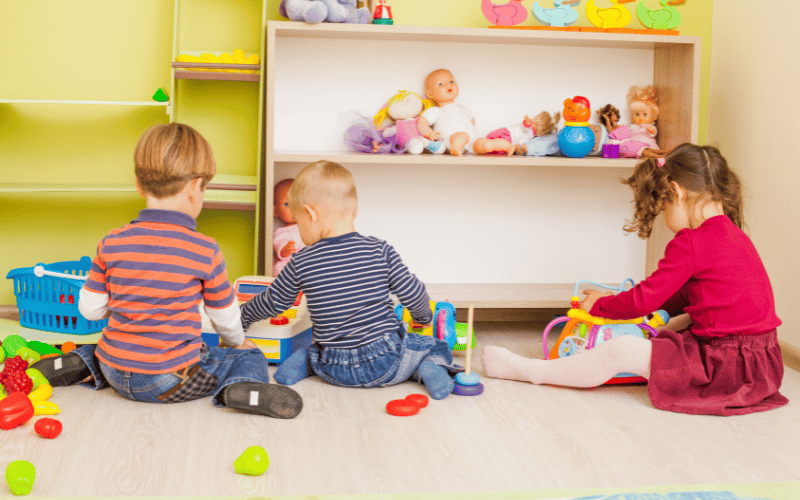
Safety Worries
Safety is a valid concern, especially when it comes to outdoor free play. However, with a few precautions, you can create an environment where children can play freely while staying safe.
Start by inspecting your outdoor play area for hazards. Remove sharp objects, secure loose equipment, and ensure that surfaces like mulch or rubber mats are in good condition to cushion falls. If you have a play structure, check for loose bolts, rust, or splinters, and make any necessary repairs.
Set clear boundaries for where children can play, especially if your yard isn’t fenced. For example, you might establish a rule that they must stay within sight of the house or avoid certain areas like driveways. If your child is playing with friends, teach them basic safety rules, such as taking turns on equipment and being mindful of others’ space.
For younger children, supervision is key. However, supervision doesn’t mean hovering—it means being present and attentive while still allowing them the freedom to explore and take reasonable risks.
By addressing concerns about unproductivity, boredom, and safety, you can confidently encourage free play as an essential part of childhood. It’s not about eliminating these worries entirely—it’s about understanding and managing them so children can reap the full benefits of unstructured play.
FAQs
Q: How much free play do children need daily?
A: Children benefit from at least 1-2 hours of free play each day. This time doesn’t need to happen all at once—it can be spread throughout the day in smaller chunks. The key is to ensure they have uninterrupted time to explore, imagine, and create without adult direction.
Q: Is free play the same as screen time?
A: No, free play and screen time are very different. Free play involves active engagement, creativity, and decision-making, while screen time is typically passive and guided by pre-programmed content. Free play encourages children to use their imagination and problem-solving skills, whereas screen time often limits these opportunities.
Q: What if my child says they’re bored during free play?
A: Boredom is a natural part of free play and often leads to creativity. Encourage your child to explore their surroundings or think of something they can create or imagine. You might ask, “What could you build with those blocks?” or “What kind of game could you make up outside?” Giving them the space to work through boredom helps them develop independence and resourcefulness.
Q: Does free play count if I’m in the same room?
A: Yes, free play can happen with you nearby, as long as you’re not directing or interfering. Your role is to observe and provide a safe environment while letting your child take the lead. For example, if they’re building a tower or playing pretend, let them make decisions and solve problems on their own.
Q: How can schools incorporate more free play?
A: Schools can incorporate more free play by extending recess, creating unstructured time in the classroom, and providing open-ended materials like blocks, art supplies, and loose parts. Teachers can also set up play stations that encourage creativity and exploration, such as a pretend play area or a nature corner. The goal is to give children opportunities to lead their own activities without rigid rules or outcomes.
Q: Are there different types of free play?
A: Yes, free play comes in many forms. Physical play includes activities such as running, climbing, and exploring outdoors. Imaginative play involves pretending, storytelling, or role-playing. Constructive play focuses on building and creating with materials like blocks or art supplies. Social play happens when children interact with others, while solitary play allows them to explore independently. Each type of free play offers unique benefits for development.
Q: What role does nature play in free play?
A: Nature plays a vital role in free play by offering endless opportunities for exploration and creativity. Sticks, rocks, leaves, and dirt become tools for imaginative play, while open spaces encourage running, climbing, and physical activity. Nature also provides a calming environment that reduces stress and fosters curiosity. Encourage your child to spend time outdoors, whether it’s in a backyard, park, or natural area, to experience the benefits of free play in nature fully.
Conclusion
Free play offers unmatched benefits for children’s cognitive, emotional, social, and physical development, shaping well-rounded individuals ready to tackle life’s challenges. By prioritizing unstructured playtime, parents and educators can create opportunities for kids to explore, imagine, and connect on their own terms. Free play empowers children to grow, learn, and thrive, reminding us all that sometimes the simplest moments of play hold the most significant value.




